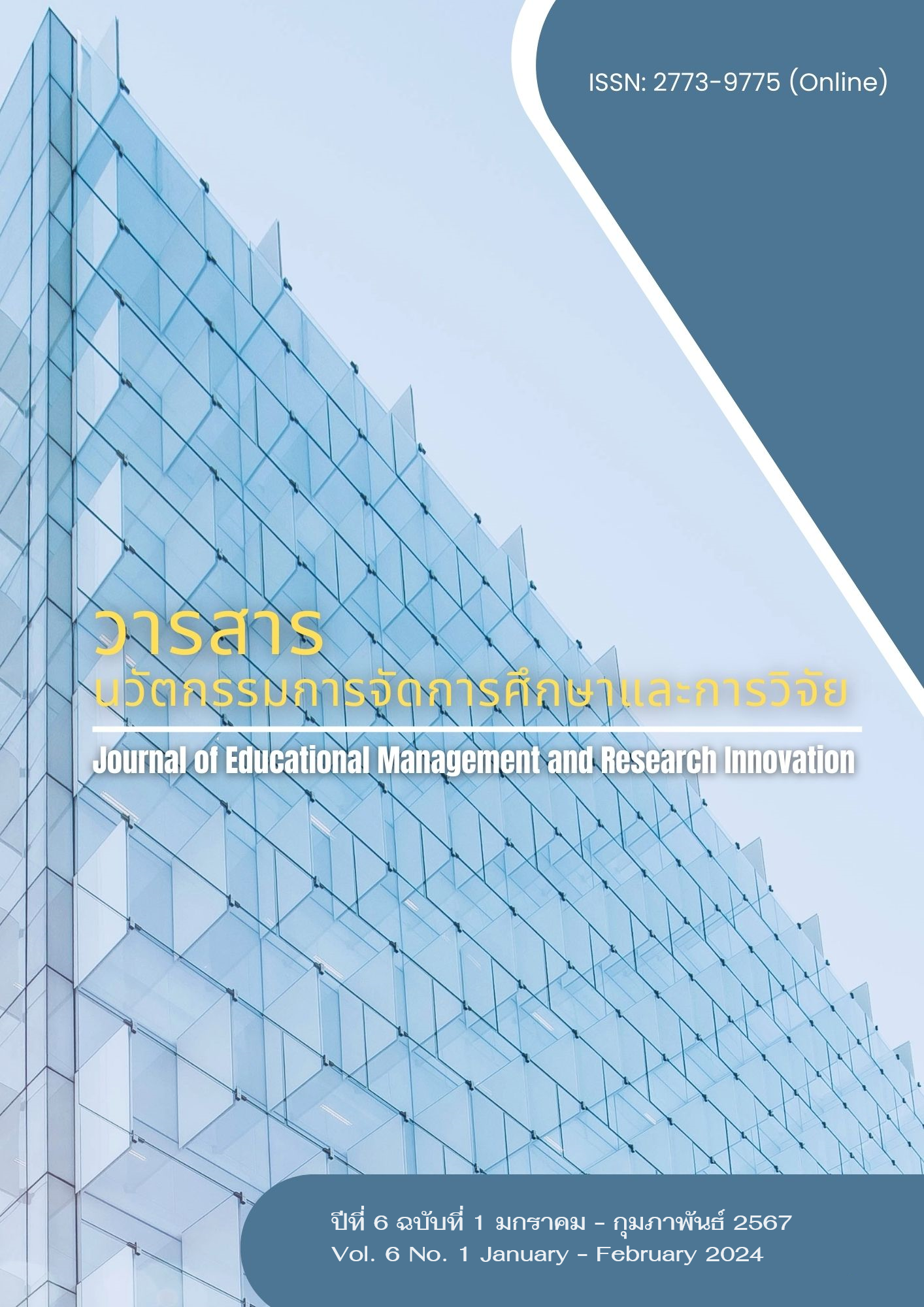The Strategy to Involved Observe the Precepts of the Buddhists in Wat Si Suk, Bangkok
Main Article Content
Abstract
This article aimed 1) to study the stratagem of precept observing in Theravada Buddhism, 2) to study of precept observing of the Buddhists in Buddhism and 3) to study the stratagem affecting the precept observing of the Buddhists at Wat Si Suk, Bangkok. It was qualitative research with the field through in-depth interviews. 15 Buddhists who observed the precepts at Wat Si Suk, Bang Mot, Chom Thong, Bangkok. The results revealed that the stratagem or an ingenious method refers to a tactic of communication leading to knowledge and practice to achieve the goal. This method is required in every science and dimension of life.
The precept observed by the Buddhists at Wat Si Suk had a motive and a goal for the benefit of this world as its domain; for the happiness and prosperity of oneself and family, continuity of body and speech calm and to alleviate defilements such as greed, anger and delusion, free from various dangers such as being persecuted, etc. After their body and mind have been purified by the precepts, the precept observance will be used as a basis for developing the mind to become more concentrated and higher in wisdom.
The stratagem affecting the precept observance of the Buddhists at Wat Si Suk found that it has been cultivated since the ancestor, consistently adhered to, and modified to keep up with the present society. For performing religious ceremonies, Buddhists at Wat Si Suk begin with alms offering to Bhikkhus, charity, making merit, observing the five precepts or eight precepts on Buddhist days, listening to the Buddha’s teaching, and meditation led by the Sangha of Wat Si Suk. Bhikkhus also guided and helped the community, participating in solving problems that arose in the community, this caused a good relationship between the Buddhists of Wat Si Suk and the monastery for merit-making, developing their virtues and mentality, merit performance, and meditation according to Buddhist teaching.
Article Details

This work is licensed under a Creative Commons Attribution-NonCommercial-NoDerivatives 4.0 International License.
References
กัลยา นาคพันธ์. (2566). ประชาชนที่มาทำบุญวัดสีสุก กรุงเทพมหานคร. สัมภาษณ์, 6 มกราคม.
ถาวร ปานเพ็ชร์. (2566). ประชาชนที่มาทำบุญวัดสีสุก กรุงเทพมหานคร. สัมภาษณ์, 8 มกราคม.
ประคอง นิมมาเหมินห์. (2551). หนังสือนิทานพื้นบ้านศึกษา. กรุงเทพฯ: จุฬาลงกรณ์มหาวิทยาลัย.
พระพรหมคุณาภรณ์ (ป.อ. ปยุตฺโต). (2555). พุทธธรรม ฉบับปรับขยาย. (พิมพ์ครั้งที่ 35) กรุงเทพฯ: ผลิธัมม์.
พระอรรถชาติ เดชดำรง. (2566). การแบ่งช่วงชั้นทางสังคม : มุมมองของศาสนาพราหมณ์-ฮินดู และพระพุทธศาสนา. วารสารนวัตกรรมการจัดการศึกษาและการวิจัย, 5(2), 481-492.
มหาจุฬาลงกรณราชวิทยาลัย. (2539). พระไตรปิฎกภาษาไทย ฉบับมหาจุฬาลงกรณราชวิทยาลัย. กรุงเทพฯ: โรงพิมพ์มหาจุฬาลงกรณราชวิทยาลัย.
สมคิด แดงแสงส่ง. (2566). ประชาชนที่มาทำบุญวัดสีสุก กรุงเทพมหานคร. สัมภาษณ์, 6 กราคม.
สมบัติ คงพารา. (2566). ประชาชนที่มาทำบุญวัดสีสุก กรุงเทพมหานคร. สัมภาษณ์, 9 มกราคม.
สมภพ แดงแสงส่ง. (2566). ประชาชนที่มาทำบุญวัดสีสุก กรุงเทพมหานคร. สัมภาษณ์, 6 มกราคม.
สุวิทย์ นาคพันธ์. (2566). ประชาชนที่มาทำบุญวัดสีสุก กรุงเทพมหานคร. สัมภาษณ์, 6 มกราคม.
ไสว สีเหลือง. (2566). ประชาชนที่มาทำบุญวัดสีสุก กรุงเทพมหานคร. สัมภาษณ์, 10 มกราคม.
เอื้อมพร ทิพย์เดช. (2561). กุศโลบายมายาคติในนิทานพื้นบ้านล้านนา. พิฆเนศวร์สาร, 14(1), 85-101.
Damnoen, P. S., Siri, P., Supattho, P. S., & Kaewwilai, K. (2021). The Development of Student Characteristics in According to the Nawaluk Framework of the Buddhist integration of Buddhapanya Sri Thawarawadee Buddhist College. Asia Pacific Journal of Religions and Cultures, 5(2), 126–135.
Klomkul, L., Damnoen, S., Sawasdee, U., & Wilairadtanakun, A. (2023). Network Development of Buddhist Communication Innovative Space For Media Literacy of Thai Youths. Journal of Namibian Studies: History Politics Culture, 35, 919-935.
Phumphongkhochasorn, P., Damnoen, S., Tuwanno, D. M., Srichan, P. W., & Udomdhammajaree, P. (2022). Educational Quality Assurance and School Management Standards According to International. Asia Pacific Journal of Religions and Cultures, 6(1), 1–16.
Tan, C. C., & Damnoen, P. S. (2020). Buddhist Noble Eightfold Path Approach in the Study of Consumer and Organizational Behaviors. Journal of MCU Peace Studies, 8(1), 1–20.


